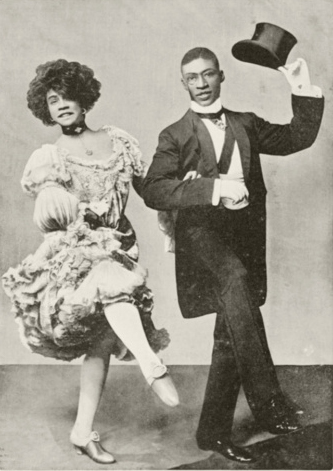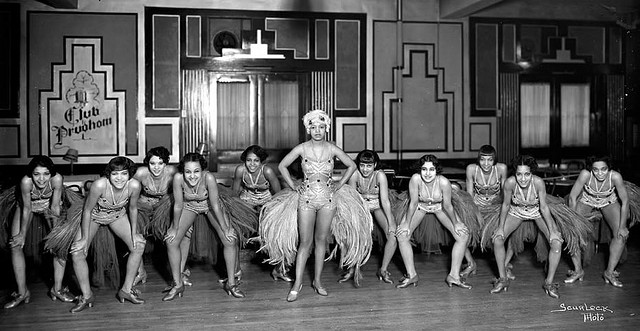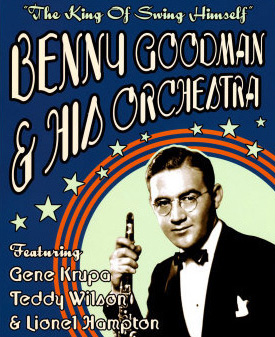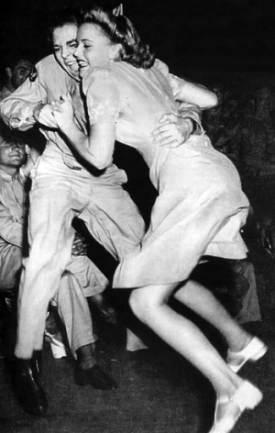From Cakewalks to the Charleston, to Jitterbugs and Swing—jazz and dance have enjoyed a steamy, cross-pollinating relationship. For over half a century, they were inseparable.
This week on Riverwalk Jazz, The Jim Cullum Jazz Band celebrates the marriage of jazz and popular dance in a show we call, Cakewalks and Jitterbugs.
Jazz has had many exciting partners in dance, with moves like the Cake Walk Prance, the Slow Drag, the Clean Up Dance, the Back Step Prance, the Dude Walk, the Charleston, the Texas Tommy, the Big Apple, the Lindy Hop and the Jitterbug..
In the 1890s, Ragtime rhythms first began to be heard in traveling tent shows and saloons. The term "ragged time," shortened to "ragtime," was coined to describe the syncopated rhythms of marches, two-steps, and Cakewalks that moved from the rural South to New York vaudeville stages and big city ballrooms.

George and Aida Walker doing The Cakewalk, 1903. Photo in public domain.
The Cakewalk was the first dance that "crossed over" from black vaudeville to white social dancing. Most white audiences in America were introduced to the Cakewalk by the black vaudeville team of Bert Williams and George Walker. Williams and Walker's athletic, hilarious routine was a smash hit, and soon even the Vanderbilts were attempting the Cakewalk at high society bashes.
Cakewalk dancers in the late 1890s, both black and white, put their own personal spin on the dance. Competing at local Cakewalk contests, couples put on a show, hoping to "take the cake" and make it into the Annual Cakewalk Jubilee at Madison Square Garden.
As early as 1905, New Orleans jazz pioneer Jelly Roll Morton was composing jazz piano pieces with a "Spanish tinge," incorporating tango rhythms. The origins of the dance known as the Tango are unclear. Some say it came from society's underbelly—the brothels of turn-of-the-century Argentina. Others insist it is a working class dance from Argentinian port towns along the South American coast. Wherever it got its start, Tango dancing became popular all over the world, including in New Orleans' Storyville district where 'professors' like Jelly Roll found employment playing the piano.

Charleston dancers rehearsing at Club Prudhom, 1920s. Photo courtesy Smithsonian National Archives.
In 1923, the great Harlem Stride pianist James P. Johnson wrote the "Charleston," a hit tune for the Broadway musical Runnin' Wild. It was a dance he'd seen performed in the dives of the New York neighborhood Hell's Kitchen. The Charleston developed into an international craze, closely identified with the 1920s Jazz Age, when Cole Porter hired bistro owner and chanteuse Ada 'Bricktop' Smith to teach his friends in Paris how to dance it with the right savoir faire.

Benny Goodman Orchestra poster, 1936. Image courtesy jazzposters.
Charles Lindbergh made his historic solo flight across the Atlantic in 1927. The Lindy Hop, the first swing dance, was named for Lindbergh and evolved out of social dancing at Harlem's newly opened Savoy Ballroom. The Lindy Hop led to popular Swing Era dances—the Jitterbug, the Big Apple and the Suzi Q.
Kids everywhere were caught up in the Swing Dance craze of the 1930s, and Benny Goodman was dubbed the "King of Swing."
During these Depression years, dance marathons became a fad. Many out-of-work people would compete for money prizes.
Photo credit for Home Page: Jitterbug dancers. Photo courtesy Sallyann Wagoner.
Text based on Riverwalk Jazz script by Margaret Moos Pick ©2002


